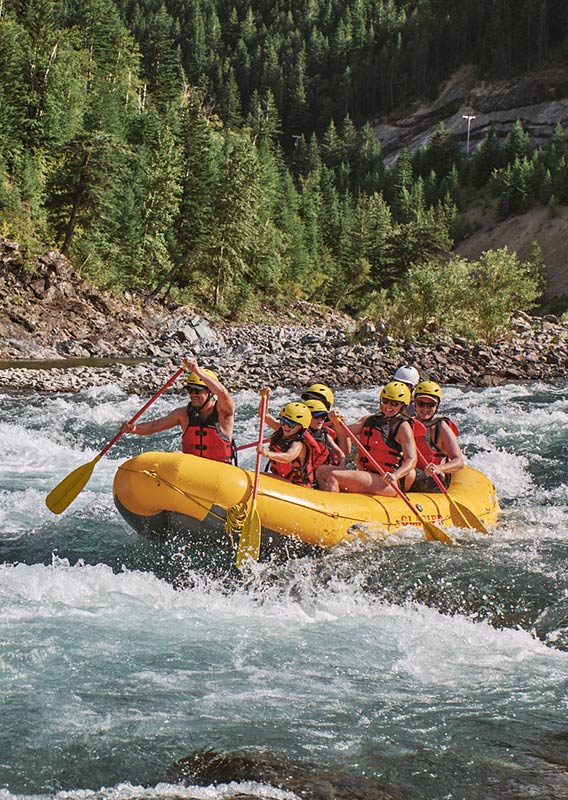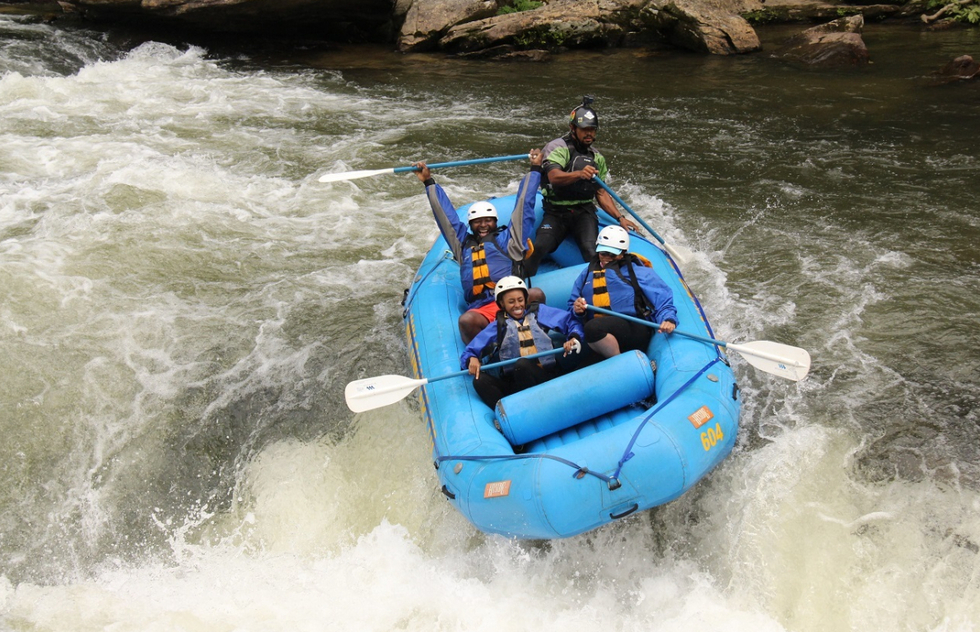Prepare for an Adrenaline-Packed White Water Rafting Colorado Expedition
Prepare for an Adrenaline-Packed White Water Rafting Colorado Expedition
Blog Article
Important Abilities for Water Rafting
Grasping the art of water rafting requires a combination of precise abilities and expertise to navigate the unforeseeable currents of rivers, making it a thrilling yet possibly harmful task. From comprehending the complexities of river characteristics to swiftwater rescue techniques and seamless group interaction, the trip down the river demands a mix of know-how and versatility. White Water Rafting Colorado.
Paddling Methods
Understanding reliable paddling strategies is crucial for browsing water rafts safely and properly. Correct paddling not just pushes the boating onward but likewise assists in maneuvering and guiding via differing water conditions. One essential strategy is the forward stroke, where paddlers dip the blade completely into the water and draw it back alongside the boating to produce propulsion. Timing and control are essential to ensure that all paddlers remain in sync, maximizing the power of each stroke.
Besides the forward stroke, the draw stroke is essential for making fast modifications or drawing the plethora better to an item. By placing the paddle blade vertical to the water's surface and pulling the water towards the plethora, paddlers can effectively change the vessel's instructions. In addition, the backstroke works as a valuable tool for supporting or slowing down the plethora when needed.
River Reviewing
Effective paddling strategies, such as the forward stroke and attract stroke, play an important duty in interpreting and navigating river currents, an ability called river reading. River analysis involves the ability to evaluate the speed, depth, and direction of the water flow to make educated decisions while navigating rapids. By comprehending just how the water walks around challenges and via different networks, rafters can choose the ideal path to securely traverse the river.
One trick element of river reading is recognizing different sorts of currents, consisting of hydraulics, swirls, and waves, and understanding how they can affect the plethora. Eddies, as an example, are locations where the water moves in a round activity, usually giving possibilities for rest or calculated maneuvers. Waves can suggest the existence of obstacles or rocks, calling for quick changes in paddling method. Hydraulics, frequently understood as "holes," are areas where water recirculates back upstream, positioning possible threats to plethoras.
Understanding the ability of river analysis is crucial for risk-free and satisfying rafting experiences, making it possible for paddlers to browse challenging waters with self-confidence and precision.

Swiftwater Rescue
Recognizing swiftwater rescue strategies is important for water rafting fanatics to react successfully in emergency situations on fast-flowing rivers. Swiftwater rescue entails a collection of specialized abilities and expertise targeted at safely extracting individuals from swift-moving water. One vital element of swiftwater rescue is identifying the hazards existing in fast-flowing rivers, such as filters, undercut rocks, and strong currents, to prepare and execute effective rescue operations.
Appropriate equipment is crucial for swiftwater rescue, consisting of throw bags, rescue ropes, safety helmets, and personal flotation devices. Rafting enthusiasts should be experienced at utilizing this equipment in high-stress scenarios to make certain the security of themselves and others. Additionally, swiftwater rescue methods typically entail teamwork and sychronisation amongst rafters to perform intricate rescue maneuvers successfully.
Educating in swiftwater rescue is highly recommended for individuals participating in water rafting activities, as it outfits them with the required skills to manage emergency situations quickly and efficiently. White Water Rafting Colorado. By comprehending and exercising swiftwater rescue techniques, water rafting lovers can enhance their safety which of their fellow rafters on challenging river expeditions
Team Communication
Efficient team effort in water rafting relies heavily on seamless interaction among staff member to make sure worked with and risk-free navigation through difficult river conditions. Clear and succinct interaction is critical for the success of any kind of rafting expedition. Group members must have the ability to properly share important information such as paddling commands, warning signals, and navigational directions.
In the hectic and usually unpredictable atmosphere of river rafting, exact and punctual communication can imply the difference in between a prospective calamity and a successful run - White Water Rafting Colorado. Each staff member plays a vital function in the general communication procedure, whether it be listening attentively to the guide's directions, communicating info to other paddlers, or signaling for aid when required
Developing a typical language and interaction system before hitting the site link water is vital. This ensures that everyone gets on the exact same page and understands how to communicate successfully throughout the rafting trip. By cultivating a culture of open interaction and mutual respect, rafting teams can boost their performance and security on the river.

Safety Procedures
In the context of water rafting, the foundation of team communication established during explorations is more strengthened through rigid adherence to safety methods. Safety protocols are extremely important in making sure the well-being of both rafters and guides during water rafting tours. One vital safety and security procedure is the correct using of individual flotation gadgets (PFDs) by every individual important source on the plethora. PFDs are critical in emergencies to keep participants afloat and give buoyancy. Furthermore, rafters must be fluent in swiftwater rescue methods and protocols in case of someone dropping overboard or if the boating capsizes.
Another key safety protocol is the detailed briefing provided by guides before embarking on a rafting trip. This rundown usually includes information on paddling strategies, what to do in situation of various emergencies, and signals made use of for communication during the trip. It is vital to have actually assigned safety and security kayakers coming with the team to provide immediate aid if needed. By purely sticking to these safety procedures, water rafting expeditions can be both risk-free and exhilarating for all participants included.
Verdict
Finally, mastering important skills for water rafting is critical for a satisfying and risk-free experience on the river. Paddling techniques, river reading, swiftwater rescue, team communication, and safety and security procedures are all necessary elements that add to a successful read this post here rafting trip. By developing these abilities, rafters can browse tough waters with confidence and ensure the security of themselves and their staff member.
Understanding the art of water rafting needs a combination of accurate abilities and expertise to browse the uncertain currents of rivers, making it a thrilling yet possibly unsafe activity. By putting the paddle blade vertical to the water's surface area and drawing the water in the direction of the raft, paddlers can successfully alter the vessel's instructions.Comprehending swiftwater rescue strategies is critical for water rafting lovers to react efficiently in emergency situation situations on fast-flowing rivers.Effective team effort in water rafting relies greatly on seamless interaction amongst team participants to ensure coordinated and secure navigation with difficult river conditions.In final thought, understanding vital skills for water rafting is critical for a safe and pleasurable experience on the river.
Report this page